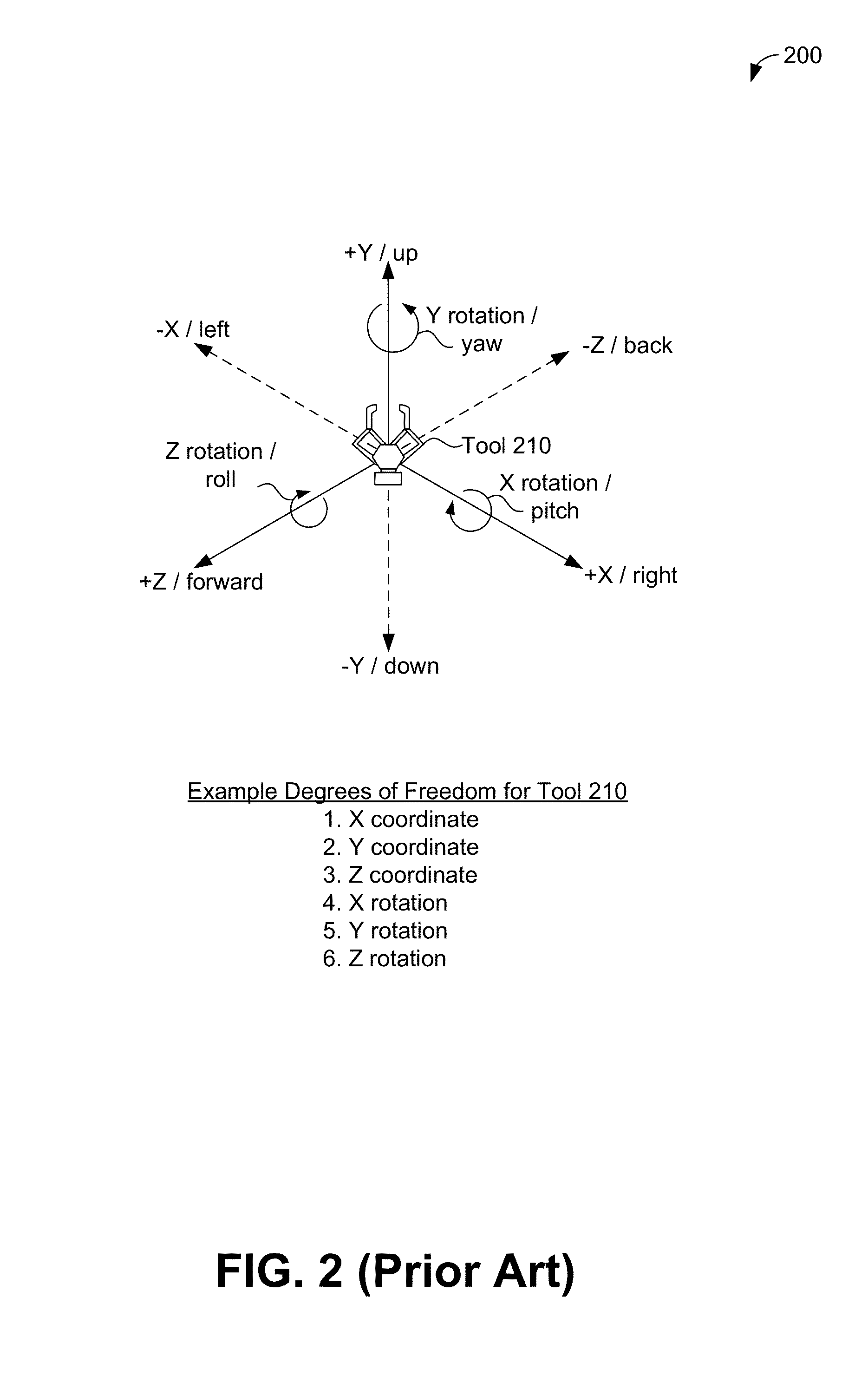Methods and Systems for Six Degree-of-Freedom Haptic Interaction with Streaming Point Data
- Summary
- Abstract
- Description
- Claims
- Application Information
AI Technical Summary
Benefits of technology
Problems solved by technology
Method used
Image
Examples
example implementation
[0139
[0140]As an example, the herein-described 6-DOF haptic rendering algorithm was implemented on a desktop computer (AMD Phantom II X6 with a Radeon HD 6990 GPU) running Ubuntu 11.10. The force was calculated asynchronously at 1000 Hz in a separate thread. During typical interaction, the collision detection algorithm ran at 15 kHz. Point images were filtered and normal vectors were calculated for every point using the GPU.
[0141]Realtime processing was achieved using a neighborhood of 9×9 points for filtering as well as normal vector calculation. The position of the haptic rendering device was both controlled automatically (for purposes of producing accurate results) as well as with a Phantom Omni haptic rendering device. Using the latter, only translational forces could be perceived by the user since the Phantom Omni only provides 3 DOFs of sensation.
[0142]To evaluate the presented haptic rendering method in a noise free environment, a virtual box (with 5 sides but no top) was con...
PUM
 Login to View More
Login to View More Abstract
Description
Claims
Application Information
 Login to View More
Login to View More - R&D
- Intellectual Property
- Life Sciences
- Materials
- Tech Scout
- Unparalleled Data Quality
- Higher Quality Content
- 60% Fewer Hallucinations
Browse by: Latest US Patents, China's latest patents, Technical Efficacy Thesaurus, Application Domain, Technology Topic, Popular Technical Reports.
© 2025 PatSnap. All rights reserved.Legal|Privacy policy|Modern Slavery Act Transparency Statement|Sitemap|About US| Contact US: help@patsnap.com



